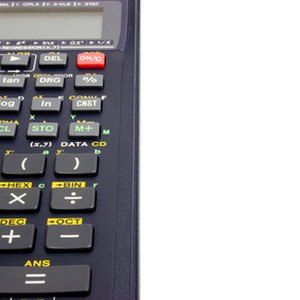
Financial calculators are a necessary tool for bankers, investment analysts and those who are studying the field. This is especially the case for problems involving future or present value of cash flows. One popular method to value the stock for a company is the discounted cash flow (DCF) method. This method requires the user to make a few assumptions, but at its heart, it is a present value of future cash flows problem. The most commonly used financial calculator is the HP12.
Define your variables. You need to determine the cash inflows (or outflows), discount rate, and time period between payments.
Review the keys to be used for the calculation. You will be using CHS, g CFo, g CFj, and Nj. CHS is the cash flow amount, g CFo is the initial cash flow, and g CFj are the cash inflows from the investment.
Enter your variables. Let's say you have a stock with an initial outflow of $500 (500 shares at $1 per share) with five cash inflows of $100 every year due to share price appreciation. Enter "500 CHS g CFo" for the initial cash outflow. Enter "100 CHS 5 g CFj" for the cash inflows. The answer is the value of the company.
Divide by the number of shares outstanding for the share price.
References
Writer Bio
Working as a full-time freelance writer/editor for the past two years, Bradley James Bryant has over 1500 publications on eHow, LIVESTRONG.com and other sites. She has worked for JPMorganChase, SunTrust Investment Bank, Intel Corporation and Harvard University. Bryant has a Master of Business Administration with a concentration in finance from Florida A&M University.

